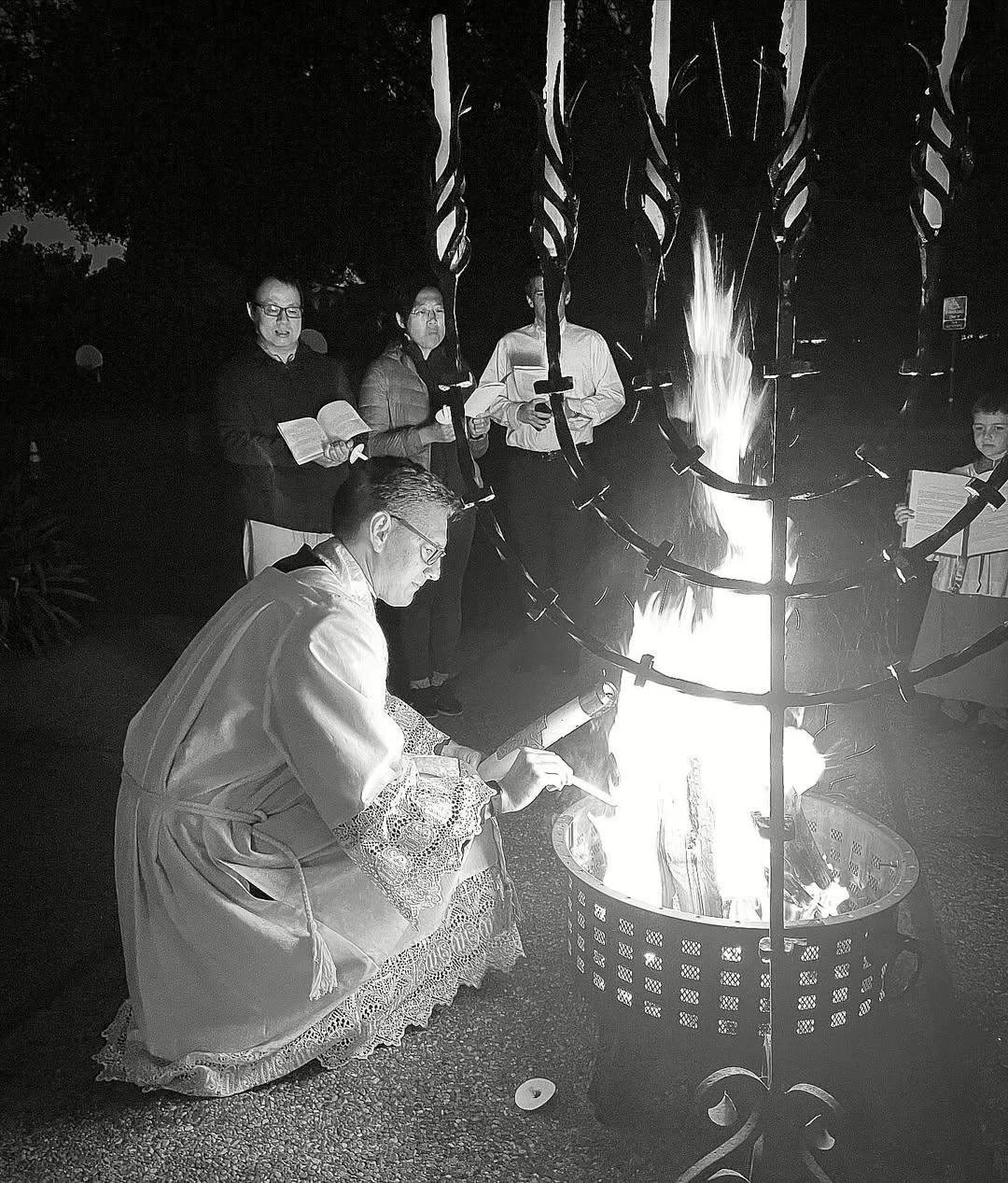Anglicanism and the Great Vigil of Easter
We celebrated the the Great Vigil of Easter at our parish (Saint Paul’s Anglican Church) on Holy Saturday evening, Rooted in the most ancient strata of Christian worship, the Vigil unfolds the drama of redemption through sign, word, and sacrament, moving the Church from the stillness of Holy Saturday into the first proclamation of the Resurrection. Many parishes end their vigil with the celebration of the Eucharist—we waited until Easter Morning.
The Service of Light: Christ as the True Light
The liturgy started outside the church with the Blessing of the New Fire, recalling both the pillar of fire that led Israel through the wilderness (Exodus 13:21) and Christ’s own declaration, “I am the light of the world” (John 8:12). The newly kindled fire was used to light the Paschal Candle, which was marked with the Cross, the Alpha and Omega, and the numerals of the present year — signifying Christ as the Lord of all time and history. Recently, a local handyman donated an rather large temple-style Menorah (seven-branched candelabrum) that we also used in our “fire” service.
The faithful processed into the darkened church behind the Paschal Candle, then thrice proclaiming Lumen Christi — “The Light of Christ.”
The Exsultet: The Christological Center
Following the lighting of the Paschal Candle, the Exsultet — the ancient hymn of praise — was sung. This hymn encapsulates the theology of the Vigil: the felix culpa, the “happy fault” of Adam that necessitated and occasioned the Incarnation; the decisive triumph of Christ over death; and the joining of heaven and earth in the Paschal mystery.
I chanted this version with the help of Ben Jefferies:
The Exsultet locates the Resurrection not only in Christ’s historical rising but in the ongoing cosmic renewal inaugurated by Him.
The Proclamation of Salvation History
At the heart of the Vigil lies the Service of Readings, a recitation of the mighty works of God in creation and redemption, heard through the lens of the Resurrection. The “full” vigil can have many more lessons, but the prayerbook only requires three in the 2019.
We heard:
- Genesis 1–2: The creation of the world, an anticipation of the new creation inaugurated in Christ.
- Exodus 14–15: Israel’s deliverance at the Red Sea, a type and figure of Baptism.
- Ezekiel 37: The prophecy over the valley of dry bones, prefiguring the resurrection of the body and the renewal of the Church through the Spirit.
Each reading was followed by a Psalm and a collect, underscoring the continuity of God’s covenantal promises across the ages.
Theologically, these readings bear witness to what Saint Augustine termed the sacramentum futuri — the Old Testament events as sacramental signs pointing to the realities fulfilled in Christ.
Admission of Catechumens
This year’s Vigil included the Admission of Catechumens — those preparing for Holy Baptism into the Body of Christ. Through the signing with the Cross and the ancient prayers of exorcism and deliverance, candidates were publicly entrusted to the Church’s care, to be brought to maturity in the Faith.
Renewal of Baptismal Vows
The Vigil also included the Blessing of the Holy Water using the Paschal Candle to sanctify the waters, symbolizing the descent of the Spirit. In early Christian practice, this Vigil was the normative time for the Baptism of catechumens, and even today, the baptismal character of the night remains central.
At Saint Paul’s, the congregation renewed their Baptismal Vows, renouncing Satan, professing the Faith of the Apostles, and affirming anew the grace given in Baptism. The sprinkling with Easter water visibly proclaimed our continual incorporation into Christ’s death and resurrection.

Leave a ReplyCancel reply